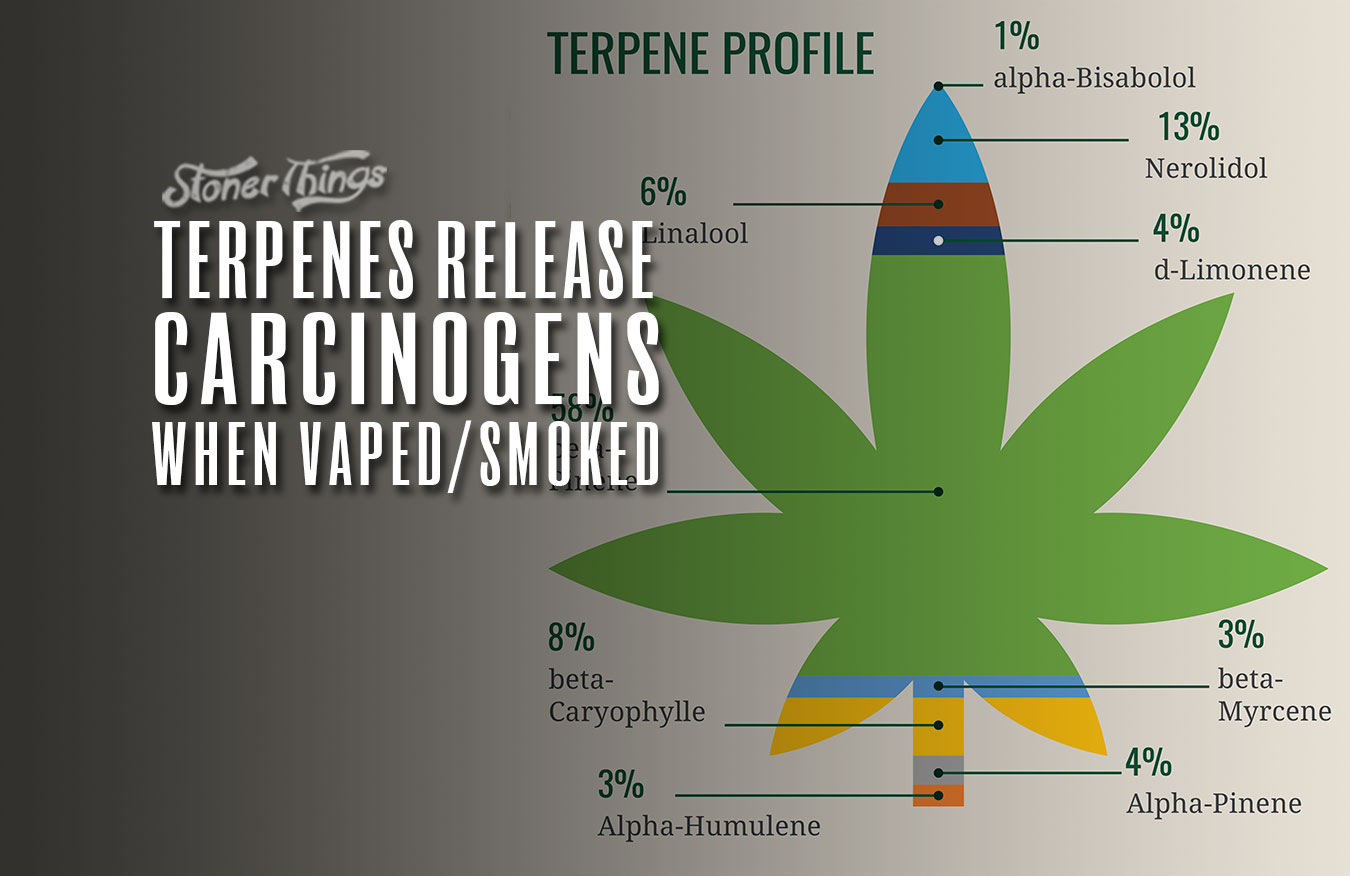Terpenes are present in many plants, but obviously we’re going to talk about their presence in cannabis. They’re stored in the trichomes of cannabis plants, the fragile, hair-like glands on mature buds. They’re also oily hydrocarbons, which may be a great band name but also happen to provide a number of characteristics to the marijuana you might buy at a dispensary. In fact, terpenes determine whether a strain is a sativa or indica based on how the particular blend of them will affect you. They’re not THC or CBD. Although they’re produced by the same glands as cannabinoids, they’re removed when cannabis is processed for medical purposes, then added back after extraction. They’re not as effective as cannabinoids at treating maladies, but can enhance the effects of them. They also provide the particular odor for a strain. Unfortunately, a recent study raises some concern about terpenes, showing they may release carcinogens when smoked or dabbed. Is it enough to keep them out of medical pot?
Medical marijuana producers actually add a significant number of terpenes to some products, but especially concentrates. This can improve the flavor, provide some benefits, or enhance the properties of the strain. Linalool is a terpene found in lavender as well as some cannabis plants, and it produces a calming effect in the body. As you can imagine, adding more to a concentrate might make for a more powerful indica. What the study found was that THC and other active ingredients don’t produce many carcinogens when vaporized, but the terpenes did.
The real question is, does this affect the safety of concentrates? Is dabbing safer than smoking or not? As always, the research continues. The authors of the study were quick to point out that this is just the beginning of research around what is produced when we use vaporization, but we’re learning that additives may be problematic. Recently a vitamin E acetate was linked to illness among some black market cartridges. Researchers are scrambling to find out what other harmful effects might arise from vaping.
Yet researchers say vaping is still an order of magnitude safer in the long run than smoking. Burning plant matter can include far more carcinogens overall. The bad stuff found in burning terpenes included scary chemicals like benzene, methachrolein, and isoprene, among others. It’s unclear if the concentrations they found in the distillates they tested would present a serious risk, especially among casual users.
More worrisome to the authors of the study was that the market has produced new distillates and novel ways to partake faster than researchers can study the negative health benefits. It’s not unusual for innovation to outpace regulation. The question is whether scientists can keep pace with that innovation as well, and prevent more health issues before they make headlines.














